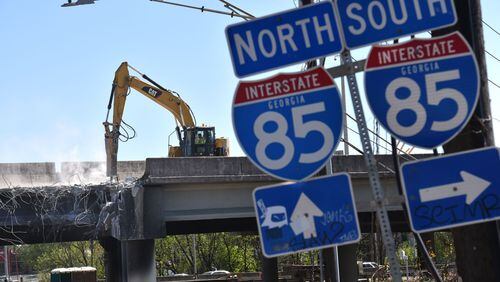Welcome back from spring break, metro Atlanta.
Now brace for a forecast of car-mageddon.
Friday marked the end of the first full work week since fire caused the collapse of a crucial Buckhead stretch of I-85. And while the gaping hole in the interstate sent drivers scurrying around the Perimeter and scrambling across surface streets, the fact that every major metro school district was out for spring break meant that, relatively speaking, traffic wasn't all that bad.
The vacation, however, ends Monday — and the Georgia Department of Transportation expects traffic to increase by as much as 20 percent.
“We are not in a business-as-usual situation,” Atlanta Mayor Kasim Reed said Friday.
Surface streets near the collapse — Sidney Marcus Boulevard, Piedmont Road, Cheshire Bridge Road — are open to drivers, as are parts of the Buford-Spring Connector.
But GDOT Commissioner Russell McMurry has repeatedly stressed the importance of public transit and urged employers to allow telecommuting as much as possible moving forward. He also asked businesses to consider allowing workers to tweak their schedules and stay off the road during peak traffic hours.
“If we all work together, we can all get where we need to go in a relatively reasonable time frame,” McMurry said.







